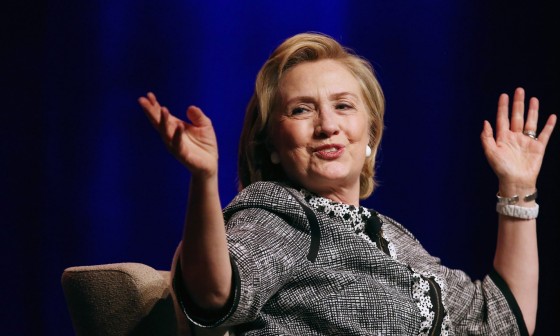In her popular book, “Lean In” (which I believe is a must read for all young professionals), Facebook CEO Sheryl Sandberg quoted the following:
A father and his son are in a car accident. The father is killed and the son is seriously injured. The son is taken to the hospital where the surgeon says, “I cannot operate, because this boy is my son.”
This popular brain teaser has been around for many years, yet sadly, remains as relevant. Most people will take a few minutes to process the lines to arrive at the simple conclusion because although we’ve come a long way, words like “surgeon ”,“ farmer” and “boss” invoke images of men in most minds. Naturally, “President of the United States” would probably invoke similar images. Considering the U.S. has never really had a female President, the reaction wouldn’t be entirely incorrect either.
The last time Hillary Rodham Clinton ran for president, her campaign struggled to address her gender in a balanced manner. She seemed conflicted between acknowledging her identity as a woman running for the most important office in the world; and establishing her identity as a cut-throat and competent politician capable of handling the top-job.
In her 2008 campaign, her gender was deemed to be a disadvantage by her advisors. It was believed that voters wouldn’t put their faith in a “mother in the white house,” especially in an increasingly volatile global environment. Since then, however, Mrs. Clinton has repeatedly referred to the election of a female US President as the “highest and hardest glass ceiling”; and her own potential to break it will most likely be central to her imminent 2016 presidential campaign.
For much of 2014, Clinton has spoken about women’s empowerment, not shying away from addressing the persistence of double standards for women in politics and other public spheres. She has often been quoted giving personal anecdotes from her own career as a lawyer and a politician, sharing feelings of being unfairly undermined by male colleagues. Moreover, Clinton has consistently been addressing issues like discrimination at the workplace, equal pay, abortion rights, paid family leave, child care and the role of women in society.
This marks a significantly different campaign preview for 2016 and a remarkable evolution since her 2008 presidential run. During her previous White House bid, Clinton focussed on her professional experience and glowing credentials, as she should. However her identity as a woman, mother and grandmother was deliberately underplayed. It was believed that voters wanted someone “tough” for the top-job.
While Clinton’s exceptional work profile speaks for itself, the idea of dis-associating serious work from women (and especially women with families) now seems outdated. The decision to ‘un-gender’ Clinton’s 2008 campaign serves as a classic example of the belief that women must appear more like men, in order to seem suitable for high political offices. In retrospect, this decision is viewed as a “missed opportunity” that left the mantle of barrier-breaking entirely to Barack Obama in the Primaries.
According to scholars and political observers, this change signifies a larger transformation in American politics. Over the last few years, there has been greater focus on gender issues and women voters. This increased emphasis on the importance of gender considerations is likely to aid Clinton or any other woman candidate for that matter, in battling unfair criticism that is often rooted in sexism.
Similarly, relatively heightened gender sensitization is likely to result in greater support for candidates who stand up for issues like equal pay and child care. Hence topics such as balancing work and family life, which would have been neglected a decade ago, are now being addressed by female as well as male politicians across party lines in the U.S.
The shift in perception can be partly credited to the unprecedented emergence of feminist media which makes it a far more hospitable environment for gender sensitive social policies. Crucially, this is paralleled with a change in demographics with women voting in higher numbers than men, higher numbers of unmarried women, higher numbers of working women, higher numbers of women heading big corporations, and importantly greater sensitization in news media to detect and condemn misogyny.
The fact that comments by certain politicians on topics of rape and abortion have only served in hurting their popularity, has not gone unnoticed in either of the two major parties. These are undoubtedly, positive changes.
Perhaps this shift in perception is around the corner for India as well? Perhaps, it’ll take another decade, or more. Our culture’s gender stereotypes do limit opportunities for women. Discrimination in the public sphere is a huge contemporary issue for women in India. But it is heartening to see the drastic increase in female and male voices that are vehemently against this discrimination. The only way to end the legitimacy of prejudice is by reinforcing the idea that the majority doesn’t want to discriminate, and you shouldn’t either.
As for Hillary Clinton- love her, hate her, do either – but for her politics, not her gender. And she shouldn’t have to underplay her gender to be a serious contender. Thankfully this time, she is being herself- an exceptional professional, a controversial former secretary of state, and a woman.
About the Author
Vidisha is researcher with Observer Research Foundation, a foreign policy think tank. Her main interests include mainstreaming gender in governance,the political-economy of gender and migration policies. She has previously worked at Centre for Social Research as a Research Associate.




Looking forward to reading your blogs, you can mail us your entries at WriteWithUs@csrindia.org, or upload them at Write With Us.
Discuss this article on Facebook





